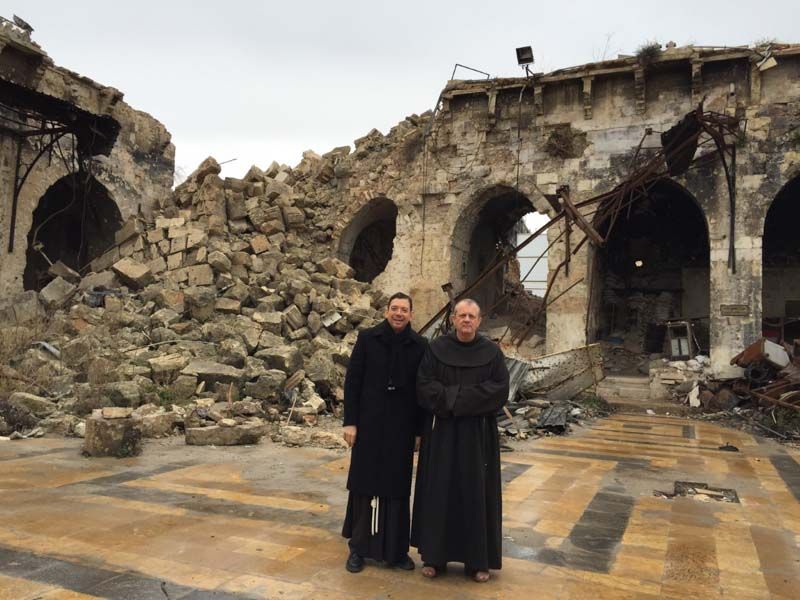Here we are in Syria’s second largest city, in the midst of destroyed homes and roads. The scene is painful, but it also leaves room for hope. Life is flourishing from underneath the rubble.
Rubble. You can see destroyed houses and roads for miles. This is the most painful stage of the trip to Syria, where it is hard to contain one’s emotions
“Welcome to Aleppo!” The signs that marks the entrance to the former Northern Capital almost seems like a joke. The signs of the bloody battle which, a few weeks ago, succeeded in expelling the rebel forces, are the most blatant scars in this large city. But even war has not succeeded in destroying its people. The faces of the people show smiles once again; cars have begun circulating again. Some shops have also resumed their activities, and in the evening a few lights in the windows light up the houses of Aleppo’s residents. The city is filled with traffic again, and the horns are raging as they would in any self-respecting Arab city.
However, if you turn the corner, your field of vision will be filled with buildings dismantled by missiles and bombs, children who play with the debris of the houses, elderly people who rummage through trash to find something to eat; of tired and hungry soldiers who look desperately search for what remains of the “Paris of the Middle East.” Water comes and goes, as does electricity. This affects the silence, which is suffocated, and while groping along, we pass through the rubble of the neighborhood streets. Who knows how long it will take to rebuild everything… who can calculate the magnitude of the work needed to help relieve the pain of those who have lost women, children, homes and loved ones.
Even the dead do not have peace in this war. When the priest of the Latin parish, Fr. Ibrahim Alsabagh, took us to the cemetery, he showed us tombs that were completely uncovered. He explained, “We have had not had any cases of desecration thankfully, but many thieves came to steal what the relatives of the deceased had placed in the tombs of their loved ones.”
Tarek, a young Syrian who is painting the chapel devastated by the bombings, works in this destroyed cemetery. With him and an engineer named Toni, we continue on foot to visit a few houses damaged by the bombings, that have now been fixed thanks to a project supported by the Pro Terra Sancta Association. The ambitious goal is to allow 29 families to return to their homes “and in this way also encourage those who have fled the country to return. “
We work continuously at the parish of Saint Francis. Drinking water wells are still available for people who of little means, and several buses leave each minute to distribute this water beyond the Azizieh district. Thursday is dedicated to the distribution of food parcels. At the visitors’ center, we meet Bashir, a five-year-old boy. His father disappeared and his mother does not have work. The only hope she and her son have of surviving, lies in the help they receive every week from the parish. Bashir is shy, but he smiles when he sees us. Like him, hundreds of people wait their turn. Everyone is given a voucher to buy the food and medications they need. But first, during a brief moment of silence, Fr. Ibrahim invites everyone to pray for the long-awaited gift of peace in Syria. Because bread is important, but it is not everything.
At the Saint Louis Hospital, we meet Giudy, 11, with her mother. Giudy was struck by two shells that hit her brain. She probably will not emerge from the deep coma into which she has entered. She opens and closes her eyes. Her mother, a Muslim, looks at the icon of the Virgin Mary that is hanging on the wall. And when Fr. Ibrahim traces the sign of the cross on the young girl’s white forehead, she turns around, smiling at her daughter. Welcome to Aleppo, where hope and sorrow are intimately intertwined and hard to dissociate, but where life has finally returned, after a very long time, too long.
Andrea Avveduto, Syria | January 31, 2017


